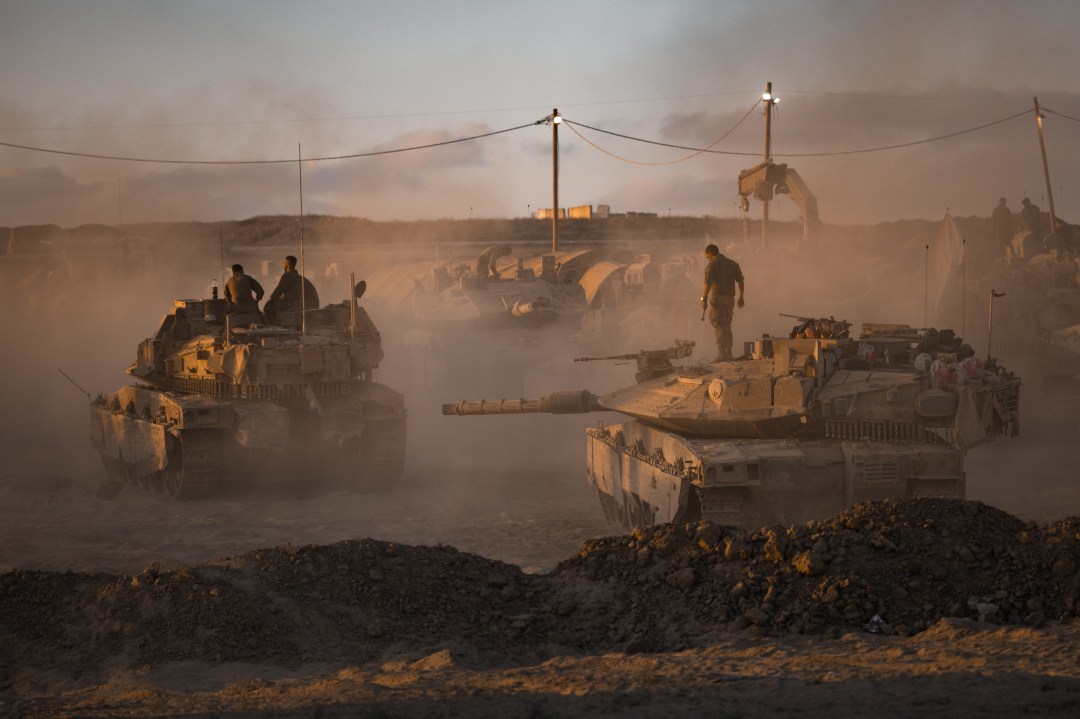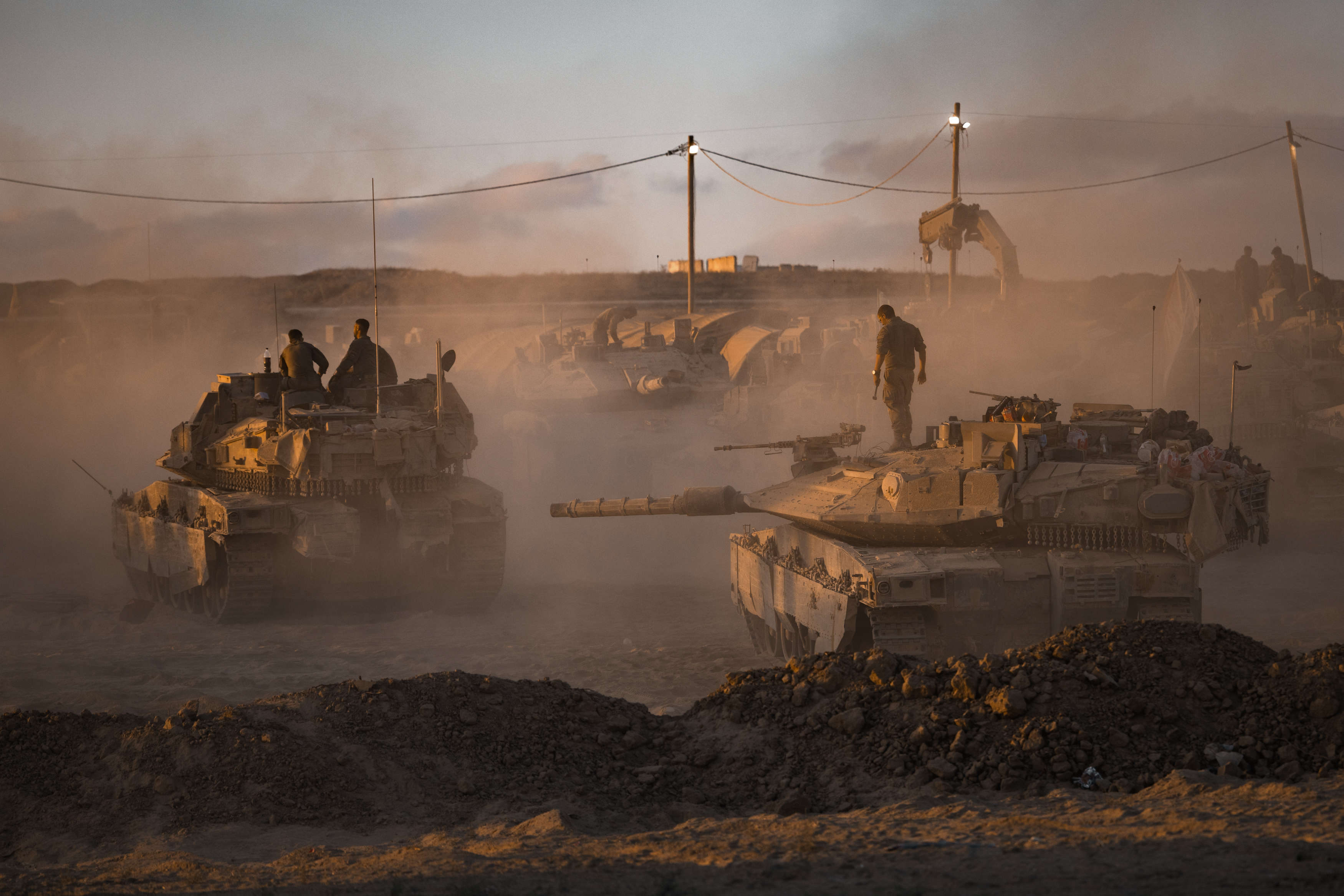Today marks two years of Israel’s Gaza war. The current conflict is perhaps now close to conclusion, depending on the negotiations in Egypt over President Trump’s peace plan.
It is already the longest war that the Jewish state has fought since its establishment in 1948. It isn’t the bloodiest conflict Israel has been involved in, though it’s getting up there. Six thousand, three hundred Israelis were killed in the 1948 war. Two thousand, six hundred died in the Yom Kippur War of 1973. Right now, the current war has taken the lives of just over 1,980 Israelis.
The war and its trajectory have perhaps above all else revealed the very narrow hinterland possessed by the Jewish state, and the apparent shallowness of its alliances
Years ago, back in the 1990s, my friends and I used to ponder over the figure of 2,600 dead in 1973. It seemed outlandish, unreal almost, and we would ask ourselves whether Israeli society would be able to absorb such losses and continue functioning as needed. Now we know the answer. Whether or not the fighting is close to conclusion, the resilience of Israeli society, and its ability to come back from the brink of disaster, are apparently intact. What else can be learned from observation of the events of the last two years?
The war that broke out in 2023 followed a long period of complacency and drift in Israel, and was to a great extent a product of it. The fighting began, of course, with the Hamas invasion and massacres of October 7, 2023. But the road that led to the situation in which a mere 767 IDF soldiers were present on the border on the morning of that day, when 5,000 jihadis appeared, was paved much earlier. The precise mechanisms of who said what and when await the inquiry which must follow any ceasefire. But the broad contours of faulty thinking and misjudgement, which affected the Israeli policymaking echelon in its entirety, can already be drawn.
The core error was the assumption of pragmatism on the other side. That is, Israeli planners in the political, military and intelligence leaderships alike jointly assumed that the Hamas rulers of Gaza had no interest in conflict. And since there were pressing needs for resources elsewhere (most urgently in dealing with the threat posed by the Islamic Republic of Iran and its powerful Lebanese Hizballah proxy), it was assumed that a calculated risk could be taken in diverting resources and attention from the seemingly minor Gaza front.
Why did Israeli planners assume that Hamas was deterred and had no interest in conflict? Did this result from a particular mis-reading of the particular version of Sunni political Islam to which Hamas adheres? The available evidence suggests that it was nothing so complicated. The system had become overly reliant on technological means of intelligence gathering and generalist forms of analysis. No one of consequence within the system was studying Islamist ideologies and the modes of thinking they tend to produce. The prevailing assumption of Hamas pragmatism appears to have emerged as a result of non-consideration of the issue, rather than flawed consideration of it. That is, in the absence of any more rigorous process of study, those running the system appear to have followed the natural human tendency of asking what they would do if they were in the adversary’s shoes, finding an answer that satisfied them on this question, and then planning and acting accordingly.
A fascinating point to note is that the Israeli security system seems to have a habit of returning to precisely this error. The same lazy assumption that the enemy was thinking in the same way as ‘us’ led Israel to assume that Egypt would not attack in October 1973. Israel as a result failed to properly deploy in anticipation of the attack, at great cost. The same assumption led to the flawed Oslo peace process of the 1990s, when Israel decided that the Palestine Liberation Organization wanted an end to the conflict and tried to make a partner of it (a process which ended in the fire and blood of the ’Second Intifada’ in the 2000-04 period.)
Similar thinking underlay the unilateral withdrawals from Lebanon in 2000, and from Gaza in 2005. Is there something in the particular Israeli approach to security decision-making which produces this same error, again and again? I can venture a suggestion: the Israeli way of thinking on these matters tends to value ‘pragmatism,’ and to be suspicious of too much hi-falutin intellectual and academic talk and jargon. You might not expect this is the way a security system defined by Jews would be, but that’s the way of it. Down to earth pragmatism and value for practical and hands-on experience is often a good and smart approach. The downside is when it substitutes what looks like earthy and practical ‘commonsense’, for close empirical study of the enemy’s way of thinking, and plans accordingly. Israel needs to break this pattern.
Luckily for those who live under its protection, what the Israeli system lacks in conceptual rigor and sophistication, it makes up for in tactical and functional prowess. This has been on display on the several fronts opened up by various elements of the Iran-led regional alliance in the period following October 7, 2023.
Israel’s decimation of Hamas in Gaza has been conducted in a kind of slow motion, because of the parallel need to negotiate for the release of hostages taken on October 7. But two years on, Hamas’s capacities have been pulverised. Over 200 hostages have been returned. The IDF controls 75 per cent of Gaza and is in the process of reducing Hamas’s last strongholds in Gaza City.
The Israeli achievement on the regional level, meanwhile, is yet more unambiguous and impressive. The Iranian nuclear project has been severely damaged, with a large part of Teheran’s military, scientific and political leadership removed from the board. Iran’s air defences are destroyed. The Hizballah organisation in Lebanon, long touted as the world’s most formidable non-state military group, is a shadow of its former self. Israel took it apart in the last months of 2024, in an intelligence-led campaign that revealed that the resources not directed towards Gaza had at least not been wasted. The Assad regime in Syria, a half-century long enemy of the Jewish state, fell in December, largely because its Iran-linked allies lacked the capacity to come to its defence after Israel’s decimation of them. The Iraqi Shia militias, who were once in the worst-case scenarios expected to come across Syria to join in battle against Israel, chose to sit out the war. Finally, the Yemeni Houthis have launched their missiles and drones at Israel, but to little effect. Israel in return has devastated their leadership and core infrastructure.
These are the broad contours of the war that has been raging in the region over the last two years. As a reporter and researcher, I have followed its lines as best as I have been able: in repeated reporting trips into Gaza, and beyond, to Syria, Iraq, Yemen and the Israel-Lebanon border area. I saw the devastation in the Gaza border on the morning of October 8th, when there were corpses strewn along the roads, and groups of Hamas fighters still operated in the fields and orchards along the border fence. I witnessed the deserted communities of the north, with Hizballah Katyusha and anti-tank missiles turning tens of thousands of Israelis into refugees, and the astonishing levels of destruction in Gaza, reduced to rubble as the IDF took on Hamas in the populated areas of the Strip. I travelled further afield, on the frontlines with under-equipped fighters arrayed against the Houthis in Dhaleh and Shabwa provinces in Yemen, and amid the crowds rejoicing in Damascus after the fall of the Assad regime. I heard the concerns, whispered even then by friends from Syria’s minority communities, at the nature and orientation of the new dispensation. And the devastation that the Iranian ballistic missiles made in Tel Aviv, on the few occasions that they got through Israel’s air defences. For better or for worse, in any case, we have been living history in the Middle East for the last two years. Nothing will ever be the same.
As for now, in a war that when it reached its height in 2024 encompassed multiple fronts, only one is still really active – Gaza itself. The US peace proposal is currently being negotiated. Perhaps the war will soon be over. In any case, Israel’s capacity, once roused, for the application of hard power has been amply demonstrated.
The events of the last two years have showcased Israel, the state, the system and the society, in both its strengths and its weaknesses. The urgent need to study the enemy, his language, motivations, ways of thinking, stories, belief systems, capacities and vulnerabilities is a paramount lesson.
But beyond this, the war and its trajectory have perhaps above all else revealed the very narrow hinterland possessed by the Jewish state, and the apparent shallowness of its alliances. Incompetent or near non-existent Israeli information campaigning might account for part of this, but I think only for a small part.
Israel has for the last two years been fighting enemies of the West, ideologically and sometimes also structurally linked to the very same forces that threaten the security and well-being of western societies. The tactics used, even the shape of the battlefield, directly resemble campaigns undertaken by western armies and their allies against comparable Islamist foes less than a decade ago (I’m talking about the coalition’s war against the Islamic State, and speaking as someone who covered both wars from close up as a correspondent).
Yet large parts of western public opinion, and even of western political leadership, reacted to Israel’s response to the October 7 attacks with opprobrium, fury and the desire to isolate and punish the Jewish state.
This solitude, alongside the tactical lessons to be pondered, is perhaps the most notable revelation of the last two years of war. Its meaning, and its implications, will be studied long after the guns in Gaza fall silent, whether that takes place imminently, or in the months ahead.








Comments